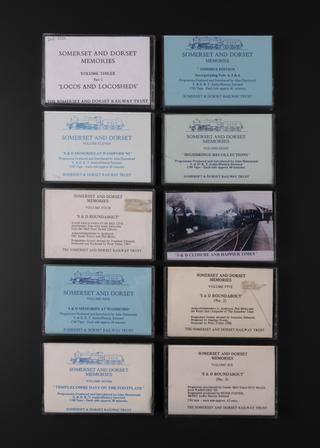

Dr Alan Wickens interviewed by Bob Gwynne and Dr Jonathan Aylen
- Made:
- 2018-04-16 in United Kingdom
Oral history interview with Dr Alan Wickens, former Director of Research at British Railways, conducted by Bob Gwynne and Dr Jonathan Aylen on the 16th April 2018. TOPS project; Educated as Aeronautical Engineer; Sea Slug; dynamics problems; Cl88 long range aircraft; Flutter and vibration specialist on Blue Steel project for AV Roe (1987.752); Recruited to BR Railway Technical Centre; observation of a coal train; using techniques from aircraft industry in the Rail industry; Derailment rate of freight wagons; PAL van critical speed; Use of computers to calculate and simulate motions of a railway vehicle; building own simulator; modifying analogue computers; British Rail Research Department; HSFV1; APT; Passenger business driving modernisation; use of CAD; finite element analysis; Research departments in other countries and businesses.
Dr Wickens explains his career prior to BR and how that influenced his work at the Railway Technical Centre. Dr Wicken's work led to a fundamental understanding of the wheel/rail interface and lead to major changes to the design of railway vehicle suspension. It enabled the development of APT, Pacer trains and high speed freight vehicles, and was shared internationally, becoming a keystone of rail vehicle design.
This interview shows the links between aerospace development and the railway industry and was conducted to understand the use of computers on BR prior to the introduction of the 'Total Operations Processing System' (TOPS).
This interview was recorded by Bob Gwynne (then Associate Curator at the National Railway Museum) and Dr Jonathan Aylen of Alliance Manchester Business School, as part of their joint research to understand the history of computerisation on British Railways and their efforts to collect memories of people involved in the implementation of TOPS on British Railways.
TOPS was a computer system implemented by British Railways from August 1973 onwards to control its freight traffic. It provided information on all train movements and all rail vehicles in real time and underpins how the rail system works. It is still in operation today.
TOPS allowed British Railways to keep tabs on its rolling stock across the whole rail network. TOPS was developed in the USA through a collaboration between IBM and Southern Pacific. The British Railways version of TOPS was noteworthy for pioneering multiplexing for computer communication across a national network. The software used was TOPSTRANS, essentially a set of IBM Macros which would call forth the appropriate sub-routines and activate drives.
As with many automation systems, TOPS forced the introduction of new management processes and shaped the way the railway operated. For the first time, there was a systematic inventory of railway assets with a consistent numbering system. It was not just an automation system but a step towards modern management of railways in the UK.
Details
- Category:
- Oral Histories
- Object Number:
- 2022-549
- type:
- oral history interview
- credit:
- Courtesy of Professor Alan Wickens



